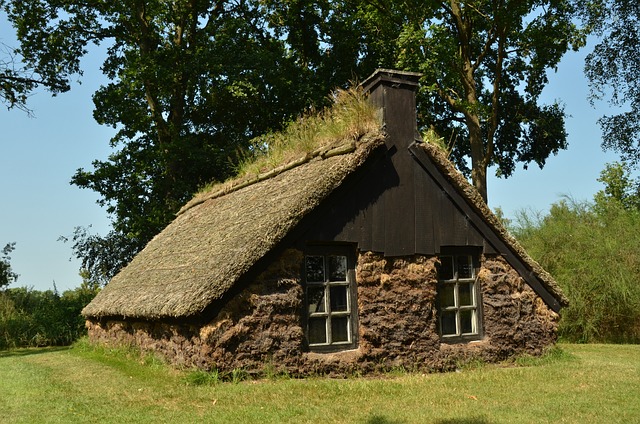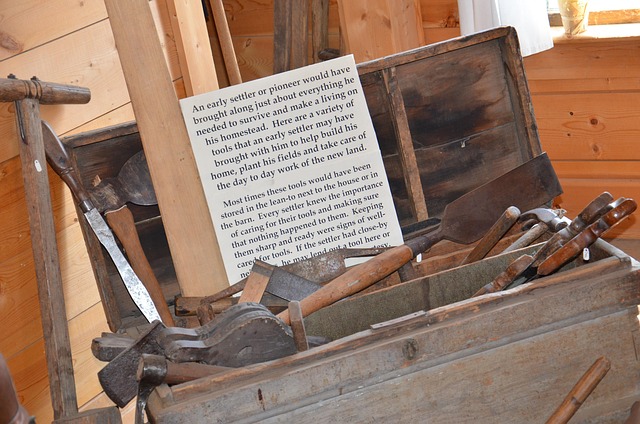In the 19th century, Lane County, Oregon became a hub for pioneering spirit, attracting early settlers seeking new beginnings along the historic Oregon Trail. They were drawn to the diverse landscapes, promising agricultural success and homesteading opportunities. Despite harsh conditions, these pioneers left an enduring legacy, building communities, homesteads, and iconic log pioneer cabins that still stand as historical testaments. Their resilience shaped the county's rich history and vibrant community, making Lane County a testament to pioneer life in Oregon.
“Lane County, Oregon, with its rich historical tapestry, was a pivotal destination along the iconic Oregon Trail. This article delves into the early settlement patterns of Lane County, exploring the motivations and challenges faced by its pioneering residents. From the allure of new life to the harsh realities of homesteading, we trace the journey of these settlers who transformed the wild landscape. Discover how the humble pioneer cabins and the region’s unique geography shaped the county’s history, leaving an indelible legacy that resonates today.”
- Historical Context: The Oregon Trail and Lane County's Role
- Early Settler Motivations: A Journey to a New Life
- Homesteading in Lane County: Claims and Challenges
- Pioneer Cabins: Humble Homes in a Wild Land
- Navigating the Landscape: Challenges and Opportunities
- Legacy of Lane County Pioneers: Their Impact on the Region's History
Historical Context: The Oregon Trail and Lane County's Role

Lane County, Oregon, played a pivotal role in the historic migration along the Oregon Trail, which saw countless early settlers seeking new opportunities and a better life. The trail, a network of paths blazed by previous pioneer travelers, became a vital route for those brave enough to embark on the treacherous journey westward. This period marked a significant shift in the region’s demographic and cultural landscape, as homesteading became the norm.
The Oregon Trail brought settlers to Lane County, where they were greeted by a diverse environment ranging from lush forests to fertile valleys. The county’s allure lay in its promise of agricultural prosperity and the chance to build a new life. However, pioneer life was no easy feat; settlers faced numerous challenges, including harsh weather, disease, and the constant threat of conflict with Native American tribes who had called this land home for generations. Despite these hardships, the early settlers’ resilience and determination left an indelible mark on Lane County’s history, shaping its character as a vibrant community that values its rich heritage.
Early Settler Motivations: A Journey to a New Life

The journey of early settlers to Lane County, Oregon, was fueled by a myriad of motivations—a desire for new beginnings, fertile land, and the promise of a better life. These pioneers, many having endured hardship in their previous homes, saw Oregon as a fresh start, an opportunity to forge their own paths. The allure of vast, untamed landscapes and the prospect of homesteading on fertile ground was particularly strong, drawing them towards the potential for self-sufficiency through farming and ranching.
Lane County’s proximity to the Oregon Trail played a significant role in its early settlement patterns. This historic route served as a vital gateway, attracting settlers from various backgrounds who embarked on the challenging yet rewarding journey west. They built their humble pioneer cabins along the trail and in nearby valleys, facing numerous obstacles but ultimately contributing to the rich tapestry of the region’s history.
Homesteading in Lane County: Claims and Challenges

In the early days of settlement in Lane County, Oregon, homesteading played a pivotal role in shaping the region’s history and character. The Oregon Trail, a historic route that attracted thousands of pioneers seeking new opportunities, passed through what is now Lane County, drawing ambitious settlers from various parts of the country. These early settlers were drawn to the fertile lands and promising prospects offered by the area, leading to an influx of claims for homesteads.
However, the process of securing these plots was not without its challenges. Settlers faced rigorous requirements, including proving their ability to cultivate the land and construct a residence, as mandated by the Homestead Act of 1862. The remote location and rugged terrain further tested their resilience, as they struggled to build sturdy pioneer cabins that could withstand the harsh Oregon climate. Despite these difficulties, the determination and perseverance of Lane County’s early settlers left an indelible mark on the region, contributing to its rich heritage and the diverse landscape that continues to captivate visitors today.
Pioneer Cabins: Humble Homes in a Wild Land

In the untamed wilderness of early Lane County, Oregon, pioneers sought a new beginning, driven by the allure of fertile land and opportunity. Among the most iconic symbols of their resilience are the humble pioneer cabins that dotted the landscape. These structures, often little more than log cabins with thatched roofs, were the first permanent homes built by settlers navigating the challenges of Lane County’s raw terrain and harsh climate. Each cabin was a testament to the determination of its occupants to carve out a life amidst the untamed wilderness of what was then a remote corner of Oregon Territory.
The construction of these pioneer cabins reflected the practical needs and resourceful spirit of the early settlers. Using locally sourced materials, they built homes that provided shelter from the harsh winters and protection against wildlife. The Oregon Trail, which snaked its way through Lane County, brought families from all walks of life—farmers, merchants, and adventurers—each contributing to a diverse and dynamic pioneer community. Despite the hardships, these early settlers found solace in the sense of accomplishment that came with claiming their plot of land and building a home in this wild but beautiful new world.
Navigating the Landscape: Challenges and Opportunities

Navigating the rugged terrain and diverse ecosystems of Lane County presented both significant challenges and opportunities for early settlers. The vast forests, fertile valleys, and dramatic coastal landscapes offered an abundance of natural resources, from timber to agricultural land. However, the same features that drew pioneers also posed obstacles, including treacherous mountain passes, unpredictable rivers, and harsh winters.
Homesteading in Lane County demanded resilience and ingenuity. Pioneers had to clear land, build durable cabins using local materials like cedar and fir, and develop sustainable farming practices adapted to the region’s unique microclimates. Many found success following the Oregon Trail, a major thoroughfare that facilitated travel and commerce, connecting them to broader markets and communities beyond the county’s borders.
Legacy of Lane County Pioneers: Their Impact on the Region's History

The legacy of Lane County’s pioneers is a captivating chapter in the region’s history. These early settlers, drawn by the promise of fertile land and new opportunities, left an indelible mark on what would become Oregon. Their journey along the Oregon Trail was fraught with challenges—from navigating treacherous terrain to enduring harsh winters—but their resilience and determination shaped the future of Lane County.
These pioneers established homesteads, built sturdy cabins that still stand as historical testaments, and laid the groundwork for a thriving community. Their contributions paved the way for subsequent waves of settlers, fostering a spirit of adventure and persistence that continues to resonate in the area’s rich cultural heritage. The legacy of these Lane County pioneers is a living reminder of the strength and innovation that defined pioneer life in Oregon.
